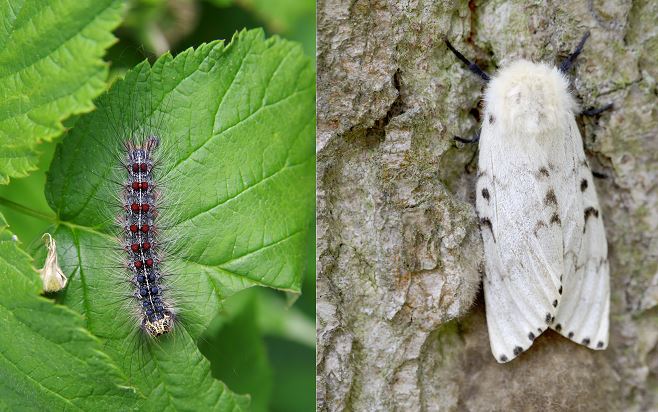

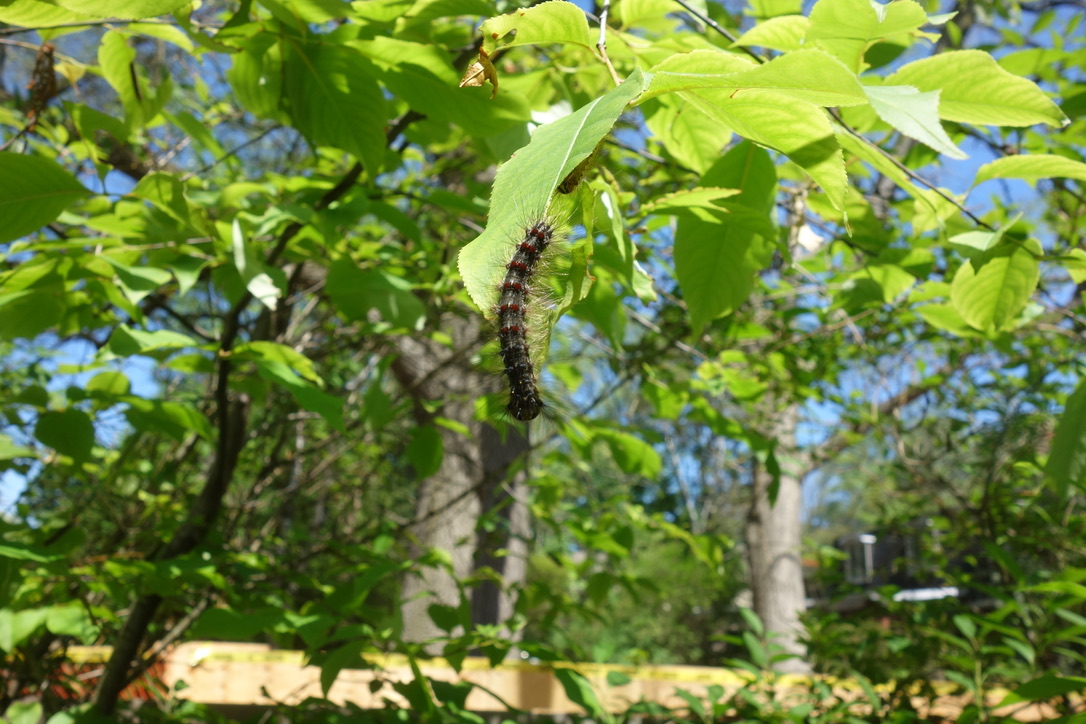
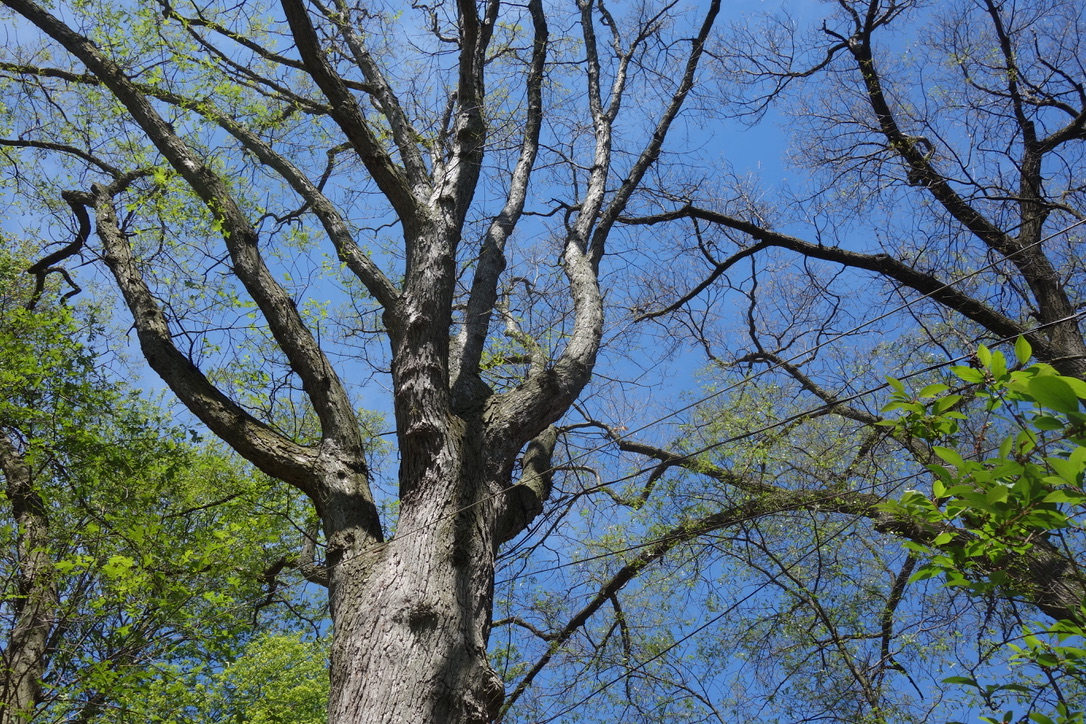




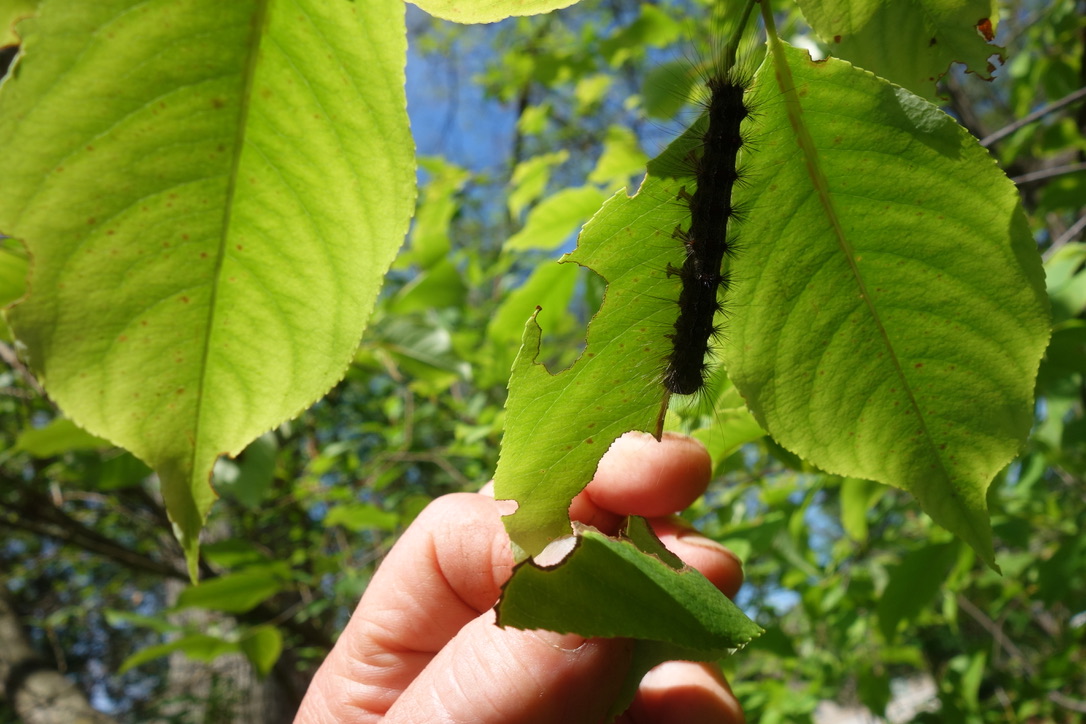
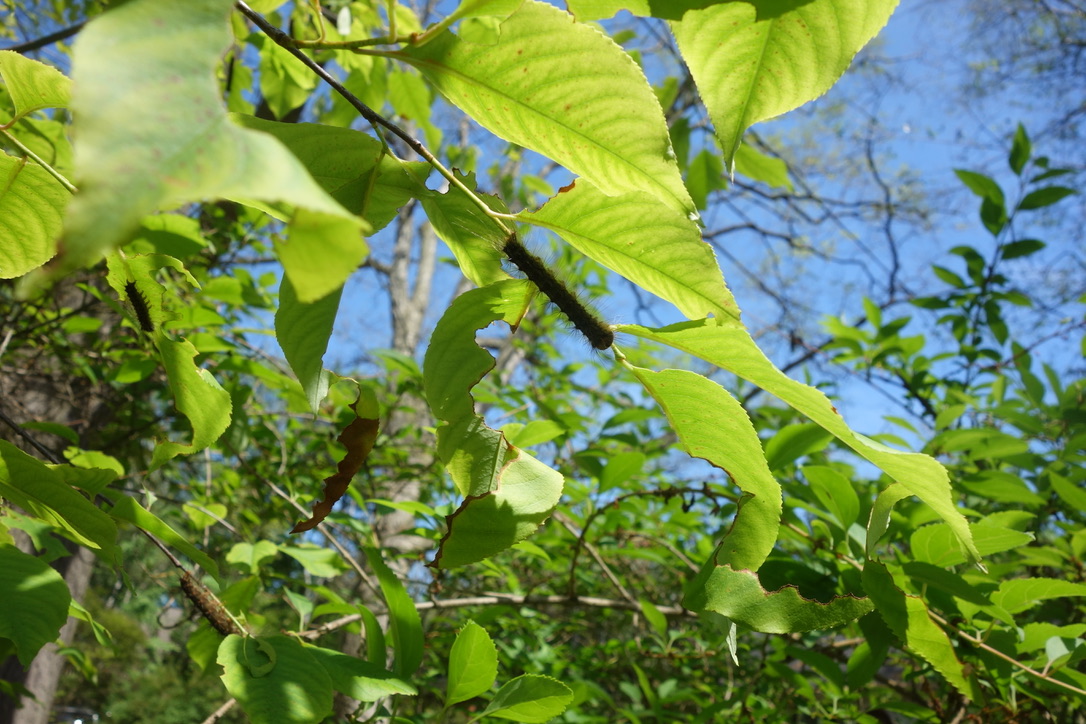
- This rash is typically contracted through direct contact with the gypsy caterpillar or moth (pictured below). If they are found in high numbers, however, their setae (tiny hairs) can travel through the wind or fabric (such as towels, clothing, etc.) causing the same reaction. Additionally, their setae can be found in soil, tree bark, and silk cocoons causing reactions months after.
- Symptoms include mild to moderate stinging or pain accompanied by welts, vesicles (small, fluid-filled sacs), raised red bumps, and patches of red, scaly skin.
- These symptoms appear within minutes or hours after contact and last anywhere from one to several days.
- Contact with mucous membranes (for example, a child putting a caterpillar in their mouth) can cause more serious reactions such as shortness of breath, conjunctivitis, difficulty swallowing, and hay fever.
- Treatment typically only requires the removal of visible embedded setae. Any that can’t be removed loosen themselves over the next several days.
- Pain from skin reactions usually subsides within a few hours but can also be medicated with over the counter pain relievers such as ibuprofen or acetaminophen.
“The crazed panic over LLD (Gypsy) Moth continues!! It is too late to spray, despite many companies still offering this service or selling the spray.
Not every caterpillar, moth and butterfly is an LLD moth (see below for some native lookalikes).
Its gross, but temporary. Leaves will grow back. Focus on keeping your trees healthy with a good soaking of water if there isn’t a good rain, and feed the soil in the dripline of the tree(s)with a thin layer of good compost or other natural fertilizer (not chemical fertilizer, they can screw up the good soil microbes).
When you see the fuzzy, cream-coloured eggs masses on bark in a few weeks from now, scrape off as many as you can into soapy water to reduce next year’s crop. They are cyclic in population and will peak then crash within the next couple of years.”




Government Spraying of Insecticide
Yes, the Government might spray for Gypsy Moths, and they may even do your property. However, they may not spray enough or use an insecticide that is very effective. This may may not be all bad. If they sprayed something more potent they might kill all the desirable preditor insects such as ladybugs, praying mantis and lacewings, as-well-as other beneficial insects such as bees and butterflies, and even birds and toads.
Besides, the Government has been spraying Gypsy Moths for over a hundred years, and the moths are still with us and spreading. See our “Fighting The Gypsy Moths” section.
If you want to your property to be protected you might have to join the fight.
Things That Individual Property Owners Can do Themselves
1. Duct tape and tanglefoot
2. Burlap folded strips
3. Burlap strips sprayed with insecticide
4. Gypsy moth traps
5. Search for and destroy egg masses
6. Aid the spread of virus fatal to gypsy moths
7. Encourage birds to visit your property
8. Hire a professional exterminator to spray from the ground
Origin of Gypsy Moths in the United States
This section provides information about how gypsy moths came to the United States.

E. Leopold Trouvelot
Gypsy Moth History
The gypsy moth was brought to North America from France by Mr. E. Leopold Trouvelot. His purpose was to breed hybrid silkworms that would be hardier than the Chinese species and that could be used to establish a silk industry in the United States. By 1865 he had a million caterpillars feeding under protective netting at his home in Medford Massachussets. In 1869 some of them escaped and were apparently scattered by a windstorm.
By 1881 the gypsy moth caterpillars had become so common in the neighborhood of Trouvelot’s old home, that the villagers in Medford considered them a local nuisance.
The population of gypsy moth caterpillar exploded during the spring of 1889. The year before had been a good one for insects, and gypsy moths had flourished and laid record numbers of eggs. Hatching in April and May of 1889, millions of gypsy moth caterpillars stripped leaves from trees yard after yard and street after street in Medford. Caterpillars covered tree trunks, fences, and sides of houses.
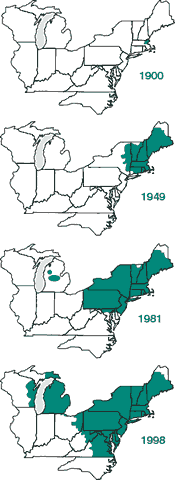
Gypsy moth spread map
University of Wisconsin
From this unfortunate start in Medford Massachussets, gypsy moths have now spread to many other portions of the United States
From 1892 to 1900 gypsy moths were confined to the extreme eastern portion of the State of Massachusetts.
By 1914 they had spread to New Hampshire, Maine, Rhode Island, and Connecticut.
By 1941 they were in Northeastern Pennsylvania and in extreme eastern New York State.
By 1981 they were all over Pennsylvania and New Jersey.
They have now spread to many other states, including Michigan and Wisconsin, as shown on the map on the right.
Gypsy Moths are now also in Virginia, West Virginia and Oregon. How did they get to Oregon? It is believed that they hitchhiked on a car or truck.
They continue to spread.
Follow this link to see efforts over the years to rid the country of Gypsy Moths: Gypsy Moth Wars

